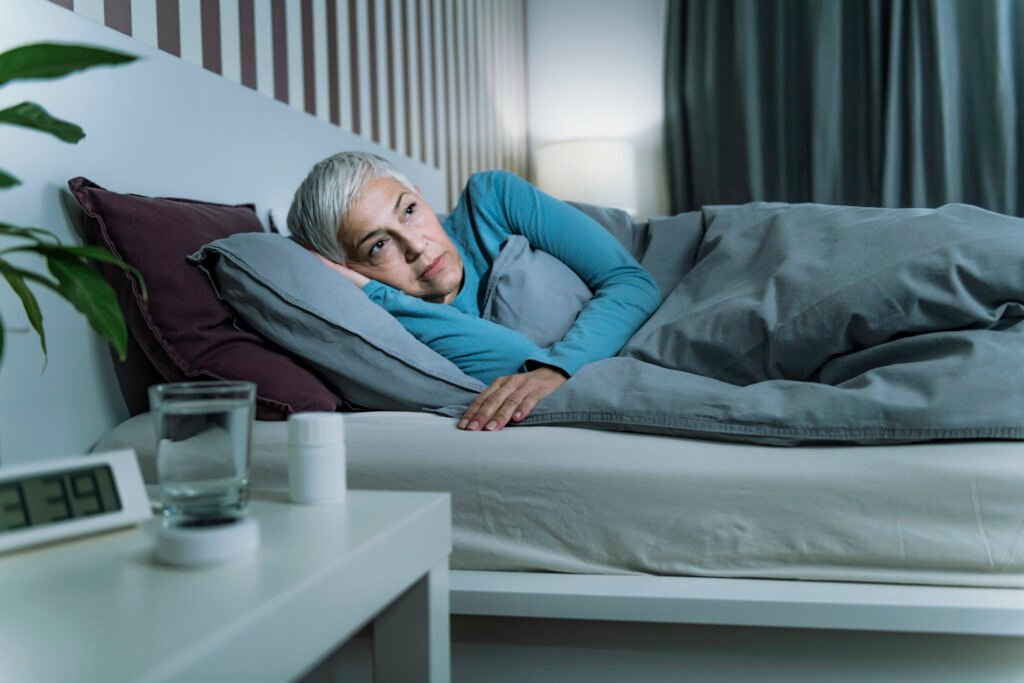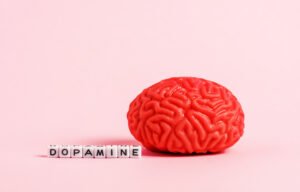Understanding Sleep: The Basics
Welcome to the world of sleep medicine, where the mysteries of slumber are unraveled, and the key to unlocking the secrets of a restful night’s sleep lies. In this chapter, we embark on a journey to explore the fundamental aspects of sleep, its importance, and the intriguing theories that underpin our understanding.
Introduction to Sleep Medicine
Sleep medicine, a specialized field within the realm of neurology and medicine, delves into the intricate mechanics of sleep and its impact on our health. It’s a field where experts like Alona Vidan, a distinguished professor of neurology at UCLA, dedicate their careers to unraveling the enigma of sleep.
Why Do We Sleep?
Why do we spend approximately one-third of our lives in a state of slumber? One theory that captivates the minds of sleep researchers is the glymphatic system. This intricate brain-cleansing mechanism primarily operates during the night, cleansing toxins and ensuring optimal brain function during waking hours. As we explore the chapters ahead, we’ll delve deeper into this fascinating theory.
Memory Consolidation and Sleep
Memory consolidation, another theory, posits that sleep plays a crucial role in organizing and storing information. Imagine your brain as a librarian, tidying up the shelves of your memories during the night. We’ll delve into the mechanisms behind this process and understand how it contributes to our cognitive well-being.
In the chapters that follow, we’ll navigate the 24-hour sleep cycle, uncover the ideal amount of sleep for different age groups, and delve into the world of sleep disorders. Join us as we embark on this enlightening journey through the realm of sleep and its profound impact on our lives.
The 24-Hour Sleep Cycle
In the previous chapter, we delved into the fundamentals of sleep medicine, introduced the eminent Dr. Alona Vidan, and explored the intriguing theories behind why we sleep. Now, let’s venture into the intricate rhythms that govern our daily sleep-wake cycle and unveil the secrets of wake propensity and circadian rhythms.
Wake Propensity Throughout the Day
The 24-Hour Dance of Wakefulness
The concept of wake propensity is a fascinating one. Imagine your day as a rhythmic dance between alertness and drowsiness, orchestrated by your internal biological clock. Here’s what you need to know:
- Morning Alertness: As the sun rises, our bodies are primed for wakefulness, thanks to the natural rise in cortisol levels. This is the time for productivity and focused activities.
- The Afternoon Slump: Have you ever wondered why you often feel a bit sluggish around 3 p.m.? This phenomenon is perfectly normal and is a result of a drop in your core body temperature and a decrease in alertness. Your body is signaling that it’s time for a brief rest.
- Evening Alertness: As evening approaches, your body temperature starts to rise again, and so does your alertness. It’s a biological nudge to make the most of your evening hours.
Managing Wake Propensity
Understanding your body’s natural rhythms can be a game-changer in managing your day. Here are a few tips:
- Leverage Morning Productivity: Schedule important tasks that require focus and creativity for the morning hours when your alertness is at its peak.
- Embrace the Afternoon Lull: Instead of fighting it, consider taking a short power nap or engaging in light physical activity to re-energize during the afternoon slump.
- Evening Wind-Down: Recognize the signs of increasing evening alertness and plan relaxing activities to prepare your body for sleep.
Circadian Rhythms and Sleep
Nature’s Internal Clock
Circadian rhythms are like the conductor of your internal orchestra, orchestrating the ebb and flow of your body’s functions over a 24-hour period. These rhythms are influenced by external cues, with the primary cue being light. Two key players in this symphony are melatonin and histamine:
- Melatonin: Known as the “sleep hormone,” melatonin levels rise in the evening, signaling to your body that it’s time to wind down and prepare for sleep. Exposure to bright light, especially from screens, can disrupt this delicate balance.
- Histamine: On the other hand, histamine promotes wakefulness. As melatonin levels decline in the morning, histamine takes center stage, helping you wake up and face the day.
Navigating Circadian Disruptions
Modern life can often throw a wrench into our circadian rhythms, with irregular work hours and excessive screen time. To keep your internal clock in sync:
- Prioritize Sleep Hygiene: Create a sleep-conducive environment by keeping your bedroom dark, cool, and quiet.
- Limit Screen Time: Avoid screens at least an hour before bedtime to allow melatonin levels to rise naturally.
- Establish a Routine: Try to wake up and go to bed at the same time each day, even on weekends, to reinforce your body’s internal clock.
In the chapters ahead, we’ll explore the ideal duration of sleep for different age groups, dissect sleep disorders, and delve into treatment options. So, let’s continue our journey into the realm of sleep and uncover the knowledge to transform your nights into restorative experiences.
How Much Sleep Do You Need?
In the quest for better sleep and overall well-being, one crucial question often arises: How much sleep do you actually need? The answer isn’t one-size-fits-all, as it depends on various factors, including age, lifestyle, and individual differences.
Ideal Sleep Duration
Tailoring Sleep to Your Age
Sleep is dynamic, and its requirements evolve throughout our lives. Here’s a breakdown of recommended sleep durations by age group:
- Newborns (0-3 months): Infants in this category need the most sleep, typically around 14-17 hours per day, although some may sleep up to 19 hours.
- Infants (4-11 months): As babies grow, their sleep patterns change. They generally require 12-15 hours of sleep each day.
- Toddlers (1-2 years): Toddlers need about 11-14 hours of sleep. At this stage, many children transition from two naps to one.
- Preschoolers (3-5 years): Young children in this age group usually need 10-13 hours of sleep, with some still taking an afternoon nap.
- School-Age Children (6-12 years): As kids enter school, they typically require 9-12 hours of sleep. Consistent sleep schedules become crucial.
- Teenagers (13-18 years): Adolescents should aim for 8-10 hours of sleep, but the demands of school, extracurricular activities, and social life can make this challenging.
- Adults (18-64 years): Most adults thrive with 7-9 hours of sleep. However, individual variations exist, and some may function well with slightly more or less sleep.
- Older Adults (65+ years): Seniors may find their sleep patterns change. While 7-8 hours is still the goal, some older adults may sleep less due to various factors.
The Perils of Sleep Deprivation
Consistently falling short of the recommended amount of sleep can lead to sleep deprivation, which has far-reaching consequences for your health and well-being. Some risks associated with chronic sleep deprivation include:
- Cognitive Impairment: Reduced alertness, difficulty concentrating, and memory problems.
- Mood Disturbances: Increased irritability, mood swings, and a higher risk of depression.
- Physical Health Issues: Higher chances of developing chronic conditions such as obesity, diabetes, and cardiovascular diseases.
- Weakened Immune System: A compromised ability to fight off infections.
- Impaired Performance: Decreased productivity and a higher likelihood of accidents, especially when driving.
Tailoring Sleep to Your Needs
While the recommended sleep durations provide a useful guideline, it’s equally important to listen to your body. Some people naturally require more or less sleep than the average. Here are some tips to help you find your ideal sleep duration:
- Maintain a Sleep Diary: Record your sleep patterns, including bedtime, wake time, and how you feel during the day. Over time, patterns may emerge.
- Assess Your Well-Being: Pay attention to how you feel with different amounts of sleep. Do you feel most refreshed after 7 hours or 8? Adjust accordingly.
- Prioritize Sleep Quality: Sometimes, it’s not just about quantity but also about the quality of sleep. Create a comfortable sleep environment to enhance restfulness.
- Consult a Sleep Specialist: If you consistently struggle with sleep or suspect a sleep disorder, seeking professional advice can be transformative.
Understanding your body’s unique sleep needs is an essential step towards better health and vitality. In the chapters ahead, we’ll dive deeper into the world of sleep disorders and their treatment options, helping you take charge of your sleep and overall well-being.
Understanding Sleep Disorders
When the tranquility of sleep eludes us night after night, it’s crucial to delve into the realm of sleep disorders to unearth the underlying issues. In this chapter, we’ll shine a light on two commonly interchanged but distinct conditions: insomnia and sleep deprivation.
Insomnia vs. Sleep Deprivation
The Insomniac’s Plight
Insomnia, a term often thrown around casually, is a clinical sleep disorder with precise diagnostic criteria. It’s not just occasional difficulty falling asleep, but a persistent and bothersome issue that affects your quality of life. Key features of insomnia include:
- Difficulty Initiating Sleep: You lie in bed for extended periods, struggling to initiate the slumber your body craves.
- Difficulty Maintaining Sleep: Once you doze off, you may wake up during the night, finding it challenging to return to dreamland.
- Early Morning Awakening: You might wake up earlier than intended, unable to get the full amount of sleep you need.
Chronic insomnia is particularly worrisome, as it persists for months or even years, leading to a host of problems such as daytime fatigue, irritability, and difficulty concentrating.
Sleep Deprivation: A Different Beast
On the other hand, sleep deprivation is a broader concept. It doesn’t solely encompass clinical insomnia but any circumstance where an individual doesn’t get enough sleep. This can happen for various reasons:
- Lifestyle Choices: You might stay up late working, studying, or watching your favorite series.
- Social Obligations: Late-night parties, social events, or shift work can disrupt your sleep-wake cycle.
- Parenting Challenges: New parents often experience severe sleep deprivation due to round-the-clock infant care.
The Differing Consequences
While insomnia and sleep deprivation can share symptoms like fatigue and mood disturbances, their origins and implications diverge:
- Insomnia Consequences: Beyond the immediate discomfort, chronic insomnia can contribute to mental health conditions like depression and anxiety. It may also be a symptom of underlying issues, such as sleep apnea.
- Sleep Deprivation Consequences: Short-term sleep deprivation can lead to irritability, difficulty concentrating, and even microsleeps (brief, unintended episodes of sleep). Prolonged sleep deprivation can have severe consequences, including impaired cognitive function and an increased risk of accidents.
Common Causes of Sleepiness
Why do so many people wrestle with daytime sleepiness? It’s a question that often underscores the importance of understanding sleep disorders. Here are some common contributors to that all-too-familiar feeling of being perpetually drowsy:
- Insufficient Sleep Opportunity: This is sleep deprivation in its purest form. Sometimes, we don’t allow ourselves enough time for a full night’s rest.
- Medications: Certain medications, particularly those that affect the central nervous system, can induce drowsiness.
- Fragmented Sleep: Sleep disrupted by frequent awakenings, as seen in conditions like sleep apnea or restless leg syndrome, can lead to excessive daytime sleepiness.
- Primary Sleep Disorders: Conditions like narcolepsy, sleep apnea, and parasomnias can profoundly disrupt sleep architecture, causing daytime fatigue.
As we continue our journey into the world of sleep medicine, we’ll explore these sleep disorders in greater detail and unveil strategies to regain the restorative sleep we all deserve.
Treatment Options for Sleep Disorders
As we navigate the intricate landscape of sleep disorders, understanding the available treatment options is vital. In this chapter, we’ll explore the diverse strategies and therapies that healthcare professionals employ to help individuals attain the restful slumber they need.
Continuous Positive Airway Pressure (CPAP)
The Gold Standard for Sleep Apnea
Continuous Positive Airway Pressure (CPAP) therapy stands as a beacon of hope for those suffering from obstructive sleep apnea (OSA). This treatment method has revolutionized the management of OSA and has been a game-changer for countless individuals.
How CPAP Works: When you undergo CPAP therapy, you wear a mask over your nose and/or mouth. This mask is connected to a CPAP machine that delivers a continuous stream of pressurized air. The air pressure acts as a pneumatic splint, keeping your upper airway open throughout the night.
Benefits of CPAP:
- Effective: CPAP is highly effective in preventing the collapse of the airway, ensuring uninterrupted breathing during sleep.
- Immediate Relief: Many individuals experience immediate relief from the symptoms of OSA, such as loud snoring and daytime sleepiness.
- Reduced Health Risks: Long-term CPAP use can lower the risk of associated health problems, including heart disease and hypertension.
Managing Restless Leg Syndrome
Taming the Restless Limbs
Restless Leg Syndrome (RLS) can be a nightly ordeal for those who suffer from it. The hallmark of RLS is an irresistible urge to move the legs, usually accompanied by uncomfortable sensations like tingling or crawling. Managing RLS requires a multi-pronged approach.
Medications: In cases where lifestyle changes don’t provide adequate relief, medications may be prescribed. Some common options include dopaminergic agents and anticonvulsants.
Lifestyle Changes: Simple lifestyle modifications can go a long way in managing RLS. These might include avoiding caffeine and alcohol, incorporating regular exercise, and establishing a consistent sleep schedule.
Rapid Eye Movement Sleep Behavior Disorder
The Enigma of Acting Out Dreams
Rapid Eye Movement (REM) Sleep Behavior Disorder is a curious phenomenon where individuals physically act out their dreams during REM sleep. This can involve anything from talking and yelling to flailing limbs. While this may sound benign, it can have serious implications.
Connection to Neurodegenerative Diseases: Emerging research suggests a potential link between REM Sleep Behavior Disorder and neurodegenerative conditions like Parkinson’s disease. Therefore, it’s essential to monitor and manage this disorder carefully.
Treatment: Medications such as clonazepam and melatonin may be prescribed to mitigate the disruptive behaviors associated with REM Sleep Behavior Disorder.
Sleep-Related Eating Disorders
Midnight Munchies Without Recollection
Sleep-Related Eating Disorders (SRED) are characterized by episodes of eating during the night, typically with no recollection the next day. These episodes can be triggered by certain medications, with zolpidem (Ambien) being a notable example.
Treatment: Managing SRED often involves discontinuing or adjusting medications known to trigger the condition. Behavioral interventions and counseling may also be beneficial.
As we traverse the diverse landscape of sleep disorder treatments, it’s crucial to remember that the right approach varies from person to person. Consulting with a qualified sleep specialist can pave the way for tailored solutions that lead to better sleep and improved overall well-being.
Conclusion and Further Questions
As we reach the conclusion of this comprehensive exploration of sleep and its various facets, it’s essential to recap the key takeaways and pave the way for further inquiries.
Wrapping It Up
In this article, we’ve embarked on a journey into the realm of sleep, from its fundamental functions to the intricate world of sleep disorders. Let’s recap some of the critical points:
- Sleep’s Vital Role: Sleep is not merely a state of rest; it’s a complex process that serves multiple functions. From memory consolidation to brain detoxification, its importance cannot be overstated.
- Understanding Disorders: We’ve delved into common sleep disorders like insomnia, sleep apnea, restless leg syndrome, and sleep-related eating disorders. Recognizing the signs and symptoms is the first step towards seeking help.
- Treatment Options: For those grappling with sleep disorders, treatment options like CPAP therapy, medication, and lifestyle changes offer hope and relief.
- A Word of Caution: Untreated sleep disorders can lead to serious health consequences. Seeking medical advice and diagnosis is crucial for your overall well-being.
Get Your Questions Answered
While we’ve covered a wide array of topics in this article, we understand that sleep is a complex subject, and you might have specific queries or concerns. That’s why we encourage you to reach out and ask questions. Your curiosity and concerns matter, and we’re here to help.
Remember, understanding sleep is a journey, and your questions are the compass that guides us forward. Thank you for joining us on this exploration of one of the most fundamental aspects of human life—sleep.









